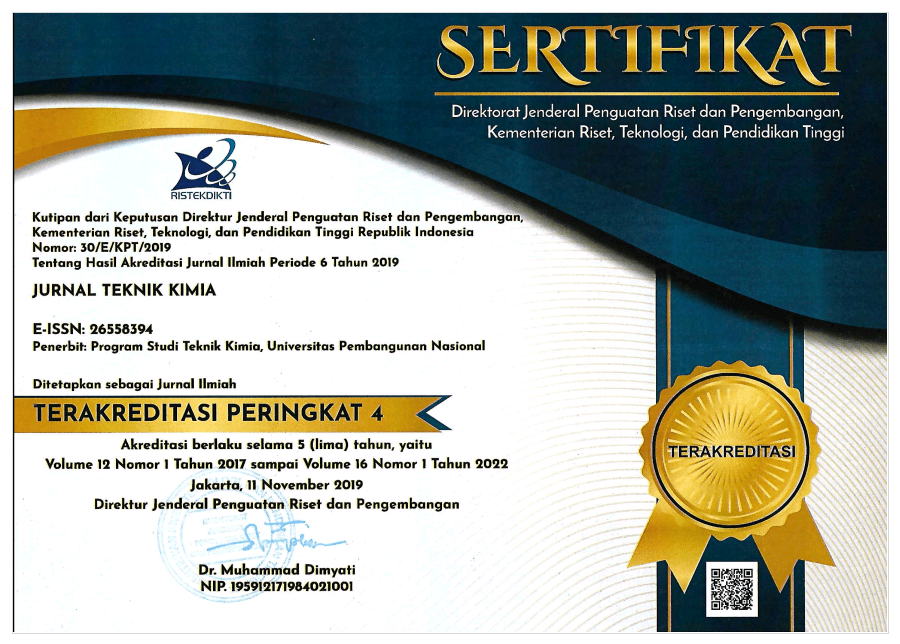SEPARATION OF METALS FROM SPENT CATALYSTS WASTE BY BIOLEACHING PROCESS
Abstract
A kind of waste that hard to be treated is a metal containing solid waste. Leaching method is one thealternative waste treatment. But there still left an obstacle on this method, it is the difficulty to find theselective solvent for the type of certain metal that will separated. Bioleaching is one of the carry ablealternative waste treatments to overcome that obstacle. Bioleaching is a metal dissolving process orextraction from a sediment become dissolve form using microorganisms. On this method, it is not amust to use a selective solvent to extract metal. This research have general purpose to separate certainmetal contains from a solid waste by bioleaching method, and the special purpose on this research areto know influence of bioleaching time to the dissociated yield metal, and to know selectivity of themicroorganisms to the metal containing spent catalyst waste on bioleaching process. Aqua DM is usedas the solvent and this experiment varied spent catalysts as solid waste from several raw material (I, II,and III raw material), bioleaching time ( 5, 10, 15 days), and types of microorganisms (EscherichiaColi and Aspergillus niger), with amount of microorganisms (10% from the total work volume), andbioleaching temperature (37 oC). Metal concentration is used for the analysis on this research. Fromthe results of this research, it is known that the bioleaching time influences metal concentration inrafinat, the longer time of bioleaching, the bigger of the metal concentration. The best metal yield Ni(i.e: 1.35% b/b) was reached from raw material III. Using Aspergilus niger fungi within 15 days.Generally, the yield of Cu, Zn, and Ni on bioleaching process using Aspergillus niger fungi was betterthen those were gained by Escherichia coli, except CrKey Words : Bioleaching, Logam, Escherichia coli, Aspergillus

This work is licensed under a Creative Commons Attribution 4.0 International License.
Copyright @ 2006 Jurnal Teknik Kimia -Program Studi Teknik Kimia - Universitas Pembangunan Nasional "Veteran" Jawa Timur
______________________________________________________________________
Pusat Publikasi | Teknik Kimia | Fakultas Teknik (Gedung Giri Reka ) | Universitas Pembangunan Nasional "Veteran" Jawa Timur, Indonesia
Jln. Raya Rungkut Madya, Gunung Anyar Surabaya, 60294 Email : jurnaltekkim@upnjatim.ac.id








